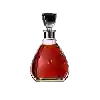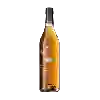
Winery M. ChapoutierDomaine de Bila-Haut Banyuls
This wine generally goes well with beef and mature and hard cheese.
Wine flavors and olphactive analysis
On the nose the Domaine de Bila-Haut Banyuls of Winery M. Chapoutier in the region of Languedoc-Roussillon often reveals types of flavors of cherry, red fruit or plum and sometimes also flavors of dark chocolate, chocolate or cheese.
Food and wine pairings with Domaine de Bila-Haut Banyuls
Pairings that work perfectly with Domaine de Bila-Haut Banyuls
Original food and wine pairings with Domaine de Bila-Haut Banyuls
The Domaine de Bila-Haut Banyuls of Winery M. Chapoutier matches generally quite well with dishes of beef or mature and hard cheese such as recipes of beef in white wine or irish tartiflette.
Details and technical informations about Winery M. Chapoutier's Domaine de Bila-Haut Banyuls.
Discover the grape variety: Muscat de Roussé
Intraspecific cross between Hamburg Muscat and Cardinal, obtained in 1973 at the Roussé viticultural station (Bulgaria).
Last vintages of this wine
The best vintages of Domaine de Bila-Haut Banyuls from Winery M. Chapoutier are 2016, 2017, 2015
Informations about the Winery M. Chapoutier
The Winery M. Chapoutier is one of of the world's great estates. It offers 225 wines for sale in the of Banyuls to come and discover on site or to buy online.
The wine region of Banyuls
Banyuls wines come from the South-eastern Part of Roussillon, in the south of France, in the lower Pyrenees, a few kilometres from the Spanish border. These naturally Sweet wines are consumed both as an aperitif and as a dessert. They come in a wide range of hues, from GoldenGreen (Banyuls Blanc) to Amber (Banyuls Ambré) to the intense garnet of the standard Banyuls Rouge. Unusually among the natural sweet wines of France, all Banyuls wines are made primarily from Grenache grapes of various colors.
The wine region of Languedoc-Roussillon
Languedoc (formerly Coteaux du Languedoc) is a key appellation used in the Languedoc-Roussillon wine region of southern France. It covers Dry table wines of all three colors (red, white and rosé) from the entire region, but leaves Sweet and Sparkling wines to other more specialized appellations. About 75% of all Languedoc wines are red, with the remaining 25% split roughly down the middle between whites and rosés. The appellation covers most of the Languedoc region and almost a third of all the vineyards in France.
The word of the wine: Dismantling
After devatting, the pomace is removed from the tank. If this operation is carried out manually, it is important to ventilate the vat well to avoid the risk of accidents due to the presence of carbon dioxide.














